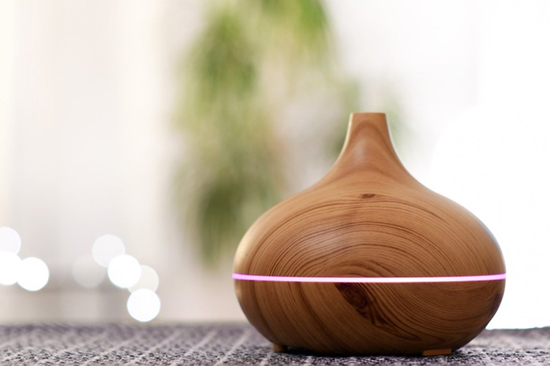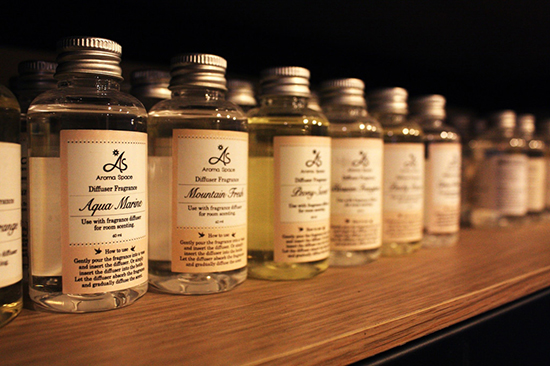还有什么事上网不能解决?这种体验互联网就不能提供

|
在这个数字化发达的时代,仍有一样东西不能通过屏幕来体验:那就是香味。所以,何妨用香味作诱饵,让人们实际体验线下的地点呢?如果这些香味悦人身心,能否吸引人们在此驻留,多花点钱,并一次次地光临呢? 香味营销学告诉我们,可以的。 这个行业常被称为周边气味市场,香味市场或者嗅觉市场,它“基本上是使用香味来阐述品牌故事,强化品牌体验,”香味营销公司首席执行官卡罗琳·法布雷加斯解释说。 品牌和营销利用香味做文章,已有数十年了——刚开始时用于宾馆和赌场,目的是掩盖烟味——香味市场最近几年里的发展势头,更体现在旅游胜地里。 纽约新世贸中心顶楼的观景台One World Observatory就是一例,在那儿有着观看下方城市的一流视野,另有一种特殊香味飘散在空气中,有着树木的芳香。这种香味是观景台自己制造的,并有着一个名字:一个世界。 又比如星巴克,它发现把准备食物和馆内进食的气味隐藏起来,能强化客户体验,享受到更多冲泡咖啡的芳香。 |
In a digitally advanced culture, there is still one thing that can’t be experienced via screen: scent. So why not turn smell into the reason one should actually experience a venue? And, if pleasant enough, can that aroma actually entice folks to stay longer, spend more money, and come back to a destination over and over again? According to the science of scent marketing, yes. Also referred to as ambient scent marketing, aroma marketing, and olfactory marketing, the industry “basically uses the power of scent to tell brand stories and to enhance experiences,” explains Caroline Fabrigas, the CEO of Scent Marketing Inc. A branding and marketing exploit that has been around for decades—at first prevalent in hotels and casinos seeking to mask the smell of cigarette smoke—scent marketing has relatively recently gained momentum across tourist destinations as well. One World Observatory, the top floor of One World Trade Center in New York, for example, is defined by world-class views of the city below and a specific smell pumped through the air that is reminiscent of the aroma of trees. That scent was commissioned by the venue itself and actually has a name: One World. Starbucks, on the other hand, figured out that hiding the odor of the food prepared and served in-house enhances the in-store experience of customers who enjoy the smell of brewing coffee more. |

|
这种想法并不特别:我们都会依赖于我们五官的感受,来记住生命中的时刻。那些销售下滑、房租上升的公司,试图将产品对人们五官的吸引方式多样化,寄希望于此来吸引更多客户,并用唤起感官感受的方式,来塑造他们的生活方式和对品牌的理解。 至于唤起怎样的感官感受,那就因品牌而不同了。凯悦酒店的气味,让人联想到家和舒适,法布雷加斯说;百家乐则追求“一种黑色的、烟味的、神秘的、非常与众不同的气味,以符合其氛围。奥伯格酒店希望客人们感受到“纳帕山谷从窗口扑面而来”, Physique 57健身房则追求“精致与奢华”的味道。 对于香味营销公司来说,业务流程开始于对品牌属性进行DNA分析,法布雷加斯开发了一种所谓香味地图。这种香味地图作为主干,需要与高级香味师合作。公司10人的团队中并没有香味师,法布雷加斯与一家香味屋合作,从而获得了“全世界最灵的鼻子”。精选后的几种香味带给客户,释放在空气中。等客户选定之后,再大规模使用这种香味。整个过程要花费8到12周时间。 香味不能申请专利,所以多数公司采用独家协议。“你的公司拥有独家的权利,使用某种特地为你制作、并与你一起制作的香味,”法布雷加斯说。当被问及香味仿制问题,比如其他人是否可以“偷盗”一种香味时,法布雷加斯引用了一个广为人知的品牌例子。“你可以试图重造可口可乐,但你永远不知道其商业秘密,”她说,“你可以制作一种类似口味的饮料,但它永远成不了可口可乐。” 有些品牌会自己开发出一些香味。比如烘培品连锁店Cinnabon,每隔30分钟会出炉新鲜的肉桂卷,以确保空气中弥漫着某种芬芳。烤炉也放在每家店的前部位置,让走过路过的客户,也可能闻味掏腰包。 这个行业的理念是有科学研究作支撑的:如果一个东西好闻,我们会想要得更多,更频繁。“过去有很多研究证实了这一点,有着某种特定气味后,一个事物会被认为更有价值,”法布雷加斯说,“在酒吧和餐馆的人们会待得更久,(如果里面有着某种芳香)。当某种香味再度出现,人们对某个品牌会瞬间产生认知。” |
The idea isn’t an odd one: We tend to remember moments in our lives based on how we lived them across our five senses. Companies dealing with declining sales and rising rents are trying to diversify ways to appeal to those five senses, hoping to draw in more customers and actually shape the way they live and breathe the brand by evoking certain sensations. As to what those sensations are, it depends on the brand. Hyatt requested a scent evocative of home and comfort, says Fabrigas; Baccarat went for “a black, smoky, cabalistic, very unusual smell that matched the decor.” Meanwhile, Auberge Resorts wants customers to feel “as if Napa Valley rushed in through your window,” and Physique 57 sought the scent of “precision and luxury.” For Scent Marketing Inc. specifically, the process begins with a proprietary brand DNA analysis that Fabrigas developed herself in order to create a scentscape. Said scentscape functions as the brief that a maestro perfumer works with. The company’s 10-person staff doesn’t actually include a perfumer, so Fabrigas works with a fragrance house that gives her access to “the best noses in the world.” A few selections are then brought to the client and diffused in the air. After a choice has been made, the scent is launched at scale. The entire process takes anywhere from eight to 12 weeks. Scents can't be patented, so most companies work on exclusivity agreements. "You have exclusive rights to use the particular scent that was created for you and with you,” Fabrigas says. When asked about olfactory thievery and whether others could potentially “steal” a smell, Fabrigas brings up a widely recognized brand. "You can try to re-create Coca-Cola, but you'll never know what the trade secret is," she says. "You may create a beverage that tastes like it, but it won't ever be the original." Some brands take scent development into their own hands. Baked goods chain Cinnabon, for example, dishes out fresh cinnamon rolls every 30 minutes to guarantee a certain aroma in the air. The ovens are also at the front of each store, so that potential customers walking by could turn into guaranteed customers. Science backs up the industry’s central tenet: If something smells good, we want more of it—and more often. “There have been a lot of studies in the past that have proven that, in the presence of a custom scent, an object will have a higher perceived value,” Fabrigas says. “People in bars and restaurants tend to linger longer [if a pleasant aroma wafts through the air]. The recognition of a brand will be more instantaneous after being in the presence of a scent when [smelled] again.” |

|
香味的应用除了发散到空气中,还有着更多实际可触的用途。一些标志性的品牌香味,被做到蜡烛、房间喷雾器、汽车空气清新剂中,甚至宾馆清洁人员在客房服务中也使用喷雾剂。又比如巴黎的卢浮宫,最近受到艺术品的启发,开发了8种香味,这些香味不是喷到馆里的空气中去,而是在礼品店里售卖。 法布雷加斯说,一些公司甚至试图通过香味来强化员工的工作体验。“有些人会跑来说,我们想要在办公室有某种香味,让员工享受这种气味,并提升工作的劲头,同时又符合我们的品牌特点。” 当然,这个行业也面临一些局限。首先,要把标志性的气味发散到空气中,公司得花钱。几项必要的设备可以是独立式的,或者能轻松装在墙上,但法布雷加斯说,“最好的散发香味的办法,是通过暖通空调系统,从一开始就进入空气循环,从而获得最无缝的、美妙的、背景式芳香效果。”当然这种方法,也更昂贵,技术要求也更高。 法布雷加斯提到,这个行业的未来将被数字科技定义,也将受益于它。“现在可以通过中央控制一切,实现真正个性化体验,因为你可以通过手机控制气味散发器,”法布雷加斯说,“还有一种极好的技术,可以将气味的体验引入到家用电脑中。” 这个行业也受到安全标准的管制,有两个机构制定管理规则:国际香氛协会(由一批全球专家组成,他们对这个行业有兴趣,也关注其安全)以及香料研究所,该所是香料问题的国际性科学权威,“评估并发布香料原材料安全测评的科学数据,这些香料涉及个人和家用护理产品。” 不过,还是有许多公司寻求开发一些超越手机和电脑的体验——法布雷斯加对此也不陌生。“我们花费了这么多时间、金钱和精力,打造我们的标识、制作气味调板、精挑细选并统一我们服务人员的水准,”她说,“但真正把这一切裹在一起的是香味,它几乎就是空气中的标识。”(财富中文网) 译者:宣峰 |
The idea goes beyond diffusion to encompass more tangible streams of revenue. Signature brand smells can be turned into candles, room sprays, car fresheners, and even housekeeping sprays used by hotel cleaning crews. The Louvre museum in Paris, for example, recently developed eight scents inspired by artworks in the collection. The scents are not pumped through the air in the galleries but are actually on sale at the gift shop. According to Fabrigas, some companies even look to enhance their employees' work life through smell. "Somebody will [come to us] and say, 'We'd love a scent for our fleet of offices, something that our employees will enjoy, and it's going to be uplifting for them but will [still] align with our brand," she says. Of course, some limitations define the industry. First, companies have to invest in ways to diffuse their signature scent across their spaces. Some of the necessary equipment is freestanding and can easily be mounted onto a wall but, according to Fabrigas, “the best way to do scent diffusion is to put it into your HVAC system at the point of inception where the air is flowing to get the most seamless, beautiful, backdrop effect of aroma in the air.” The method requires more expensive and technically advanced systems. The CEO mentions that the future of the industry will likely be defined by and will certainly benefit from digital technologies. “There is a possibility now to control things centrally and to have really individual experiences because you can control the diffuser through your phone,” Fabrigas says. “There also is a terrific opportunity to bring the scent experience to the home computer.” Safety standards also govern the business, and regulations are put in place by two bodies: the International Fragrance Association (made up of a global team of experts with the interests and safety of the industry in mind) and the Research Institute of Fragrance Materials, the international scientific authority on the subject, which "evaluates and distributes scientific data on the safety assessment of fragrance raw materials found in personal and household care products." Still, many companies are seeking to develop experiences that go a bit beyond a phone or a computer—a fact that isn’t lost on Fabrigas. “We spend so much time, money, and energy on crafting our logo and doing our color palette and picking our music and the uniform of our hospitality staff,” she says. “But the scent is the thing that really wraps all of that together. It’s almost like your logo in the air.” |













